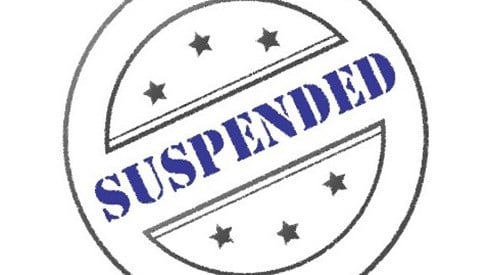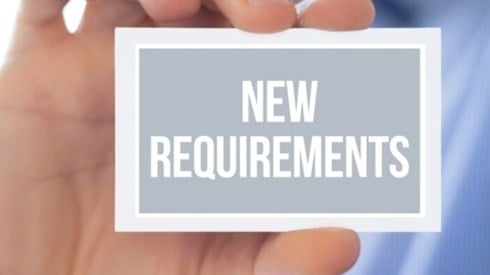Can a Captive Insurance Company Insure Employee Benefits?

August 23, 2024

Early captive insurance companies were used almost exclusively to insure their owners’ property and casualty risks. Today’s captive insurance company can provide virtually any type of coverage, as long as it is within the regulations of the selected domicile. Captives are routinely used to insure such diverse risks as contractors professional liability, environmental liability, terrorism, directors and officers liability, employment practices liability, cyber security, and warranty programs.
Today, a number of organizations also utilize some form of captive insurance to fund the costs of employee benefits such as medical and life insurance, accidental death and dismemberment, long-term disability (LTD), and retiree benefits. test
Advantages of Funding Benefits through Captives
Five reasons are frequently cited for covering employee benefits in a captive.
- Claims and loss control. If the risk is insured in a captive, it will be easier for the employer to take control of loss data and institute proactive claims management processes that have been proven effective in reducing workers compensation loss costs.
- Cash flow. If the line is actuarially predictable and with a slow payout such as life and LTD, the captive can earn investment income on the reserves and underwriting income on the portfolio of risk. An effective investment management policy, plus the tax-favored treatment of life insurance reserves, may therefore allow an employer to reduce the cost of providing benefits below the cost of a traditionally insured or self-insured program.
- Tax efficiency. Writing the risk in the captive will be more advantageous than self-insurance if it allows the insured to accelerate the tax deduction for incurred losses, deducting premiums paid to the captive. For captives that pay US federal income taxes, there is also the possibility that the effective tax rate on all of the captive's income can be reduced. This happens if the captive qualifies to be taxed as a life insurance company. Captives that pay no income tax because of noncontrolled foreign corporation status can also provide an efficient way of financing benefits that are to be paid in the future.
- Unrelated business. The Internal Revenue Service (IRS) will treat lives insured in a captive as unrelated risk, which may strengthen the case for deducting all premiums paid to the captive. Even though there is no long-term investment income or acceleration of the tax deduction, and there may be an increased expense of front company or captive premium taxes, the advantage of increasing the amount of unrelated risk in the captive may make it worthwhile.
- Reduction in insurance expense. As with property and casualty insurance, life insurers have profit and administration loads that are included in premiums. If the captive is able to write the benefit risk directly, the expense load is reduced because more of the premium goes toward loss payments.
Disadvantages of Funding Benefits through Captives
The disadvantages of funding employee benefits risks through a captive insurer are similar to those of using captive insurance for property or casualty exposures. For example, plans seeking United States Department of Labor (DOL) approval will be required to use a fronting insurer. Establishing an agreement with a sound fronting company for the services required by a captive can be difficult and expensive. Captive programs established for plans not subject to DOL approval, such as for medical stop-loss coverage, are not required to use a front.
Captive insurance companies require involving a number of outside entities, leaving the employer more dependent on third-party service providers. An employer may have to engage a captive manager, an investment firm, a claims administrator, an accountant, an actuary, an attorney, and a reinsurer. If an employer already operates a captive insurance company for other risks, some of these providers will already be in place.
As with any other type of self-funding arrangement, a captive may suffer losses greater than an employer's projections. Some types of employee benefits involve very long tail liabilities. For example, LTD benefits might have a 30-year payout. If a captive insurance program covering such benefits is terminated, the captive will need to manage or transfer the tail liability. Inadequate loss reserves can trigger sharp increases in the rates charged by a captive and in the capital requirements in order to ensure its financial solvency.
It requires the time and commitment of personnel to make certain all aspects of the captive insurance company are properly addressed. However, the trade-off between the additional administrative time and the benefits gained from a successful captive program is generally quite favorable.
DOL Approval Process
DOL approval is required to insure or reinsure any employee benefits risks covered by the Employee Retirement Income Security Act (ERISA) if the plan sponsor owns 50 percent or more of the insurer. Accordingly, an organization desiring to fund employee benefits through a captive insurance company (an insurance company it owns) must first receive a "prohibited transaction exemption."
One type of prohibited transaction exemption, a "statutory exemption," was established to allow commercial insurance companies to insure their own benefits as long as the premiums for employee benefits were no more than 5 percent of their business. In 1979, the DOL expanded the "statutory exemption" so that insurance companies could underwrite their own employee benefits as long as the employee benefits business did not exceed 50 percent of the insurance company's business. This exemption was known as a PTE 79–41.
PTE 79–41 opened a new door for insurers that did not qualify for the "statutory exemption." However, in applying the 50 percent test, the DOL took the position that all of an insurer's related business, including property and casualty business, should be considered. Because few captive insurance companies had sufficient unrelated business to meet the strict interpretation of the 50 percent rule, employee benefits subject to ERISA were seldom insured through a captive.
The Columbia Energy decision in 1999 reflected a substantial change in the DOL's position. In that decision, the DOL stated that it would approve an "individual exemption" to allow reinsuring employee benefits through a captive insurer even if the captive had no outside business at all. Such individual exemptions call for captives to meet certain requirements such as the following.
- The captive must appoint an independent fiduciary to see that the captive meets all DOL conditions and that it is in the best interests of employees.
- The captive must use highly rated primary insurers to front its policies.
- The captive must be subject to US regulation and thus domiciled in one of the states or US territories with captive insurance legislation.
- The benefits offered to plan participants must be enhanced as a result of utilizing the captive.
The DOL discourages applicants seeking to utilize a captive funding program solely to reduce the employer’s costs. Therefore, employers should include improvements for their employees, such as enhancing the benefit plan design or reducing employee-paid premiums. While enhancing benefits and reducing the premiums paid by plan participants certainly erode the financial benefit, employers may still gain cost savings. In addition, captives generally offer more stability and a layer of insulation from cost swings due to insurance market cycles.
Since issuing the "individual exemption" to Columbia Energy, the DOL has issued enough similar exemptions that employers may now file under the DOL's fast-track approval process known as the "Expro" process. Under these rules, if properly filed with all conditions met, the DOL provides an initial judgment within 45 days of receiving an application and then provides its final decision in the next 30 days.
This article is based on information in “Utilizing Captive Insurance for Employee Benefit Programs,” Risk Financing Perspectives, Volume 26, No. 4, and Captives and the Management of Risk.
August 23, 2024






